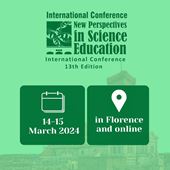Photodegradation of Riboflavin – Model Experiments on Photo Processes in Chemistry Classes
Thomas Waitz, Georg-August-University Göttingen (Germany)
Vivian Keune, Georg-August-Universität Göttingen, Institute of Inorganic Chemistry, Tammannstr. 4 D-37077 Göttingen (Germany)
Erhard Irmer, XLAB – Experimental laboratory for young people, Georg-August University Göttingen, Germany (Germany)
Abstract
Interaction between electromagnetic radiation and matter influences numerous chemical reactions and often leads to phenomena already known from everyday life. Despite their relevance, little attention has been paid to these interactions in chemistry education, especially due to a lack of conceptually embedded experiments.
The presented experiments show how fluorescence can be applied as a detection method for reaction components by using the example of photodegradation of the vitamin riboflavin. These experiments also illustrate structure-property relationship by means of fluorescence and colour.
In the first experiment presented, the orange-yellow vitamin is extracted from custard powder and identified by its typical yellow fluorescence as well as by forming a non-fluorescent red complex when silver ions added. [1]
In a second experiment, an aqueous riboflavin solution is exposed to UV radiation for a few minutes. Thus, riboflavin degrades, among other photoproducts, into lumichrome, showing blue fluorescence. [2]. By thin-layer chromatography, riboflavin and lumichrome can be distinguished by their respective fluorescence colour.
Based on these experiments, a third experiment focuses on factors that influence riboflavin degradation: temperature and solvent as well as duration and wavelength of radiation are being varied and the influence of these factors on reaction speed is being examined. For this purpose, a semi-quantitative analysis of the riboflavin/lumichrome ratio is performed by thin-layer chromatography.
The experiment illustrates the formation of a particularly large quantity of photoproducts at elevated temperature and long radiation time when using the solvents ethanol, 1-propanol or acetone, and when irradiating with visible short-wave or UV light.
The presented experiments can be theoretically and practically expanded, for example, by measuring absorption and emission spectra, or by comparing the fluorescence behaviour of riboflavin and other vitamins such as thiamine.
 New Perspectives in Science Education
New Perspectives in Science Education


























